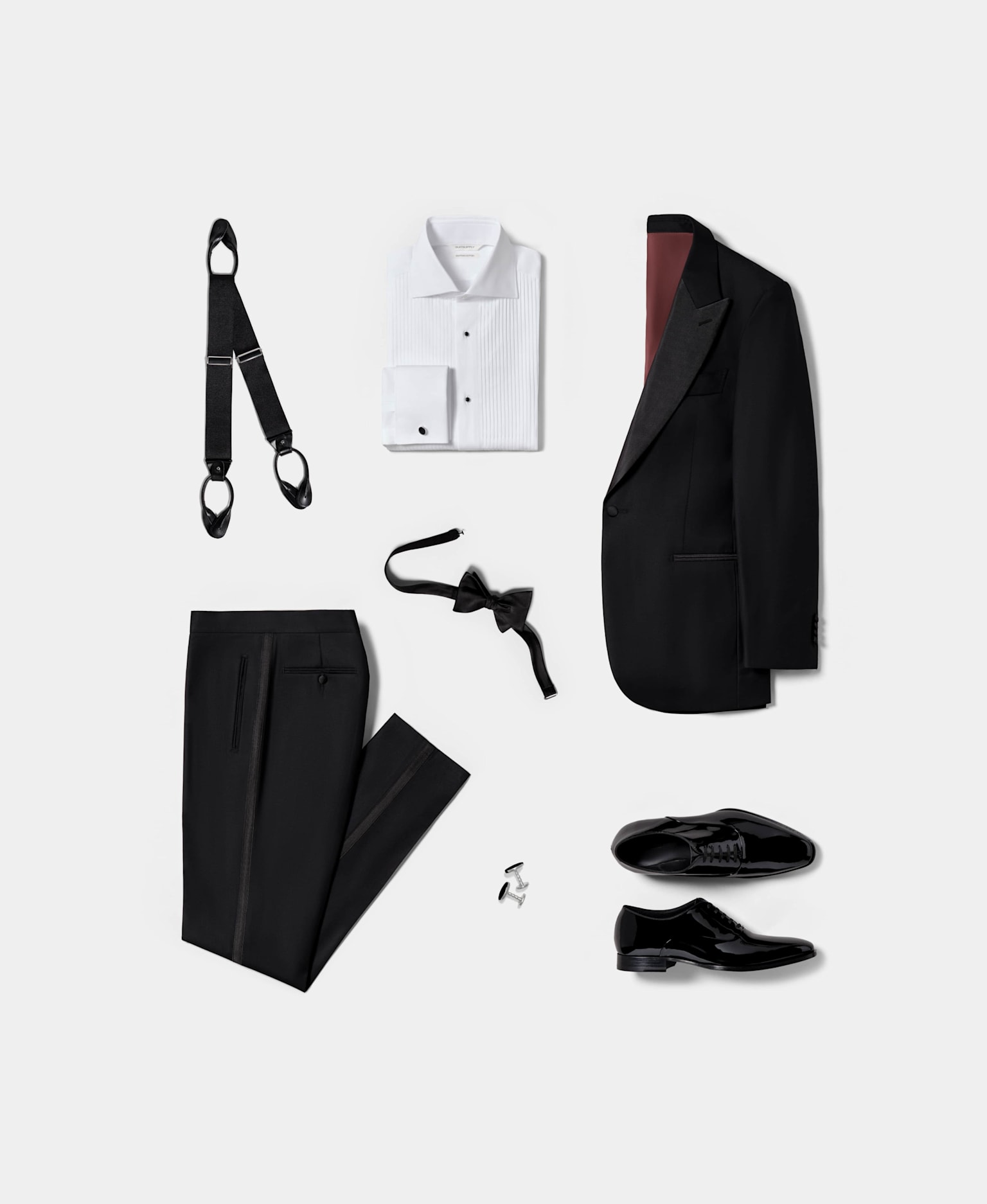Wedding
Black-Tie Attire
Decoded
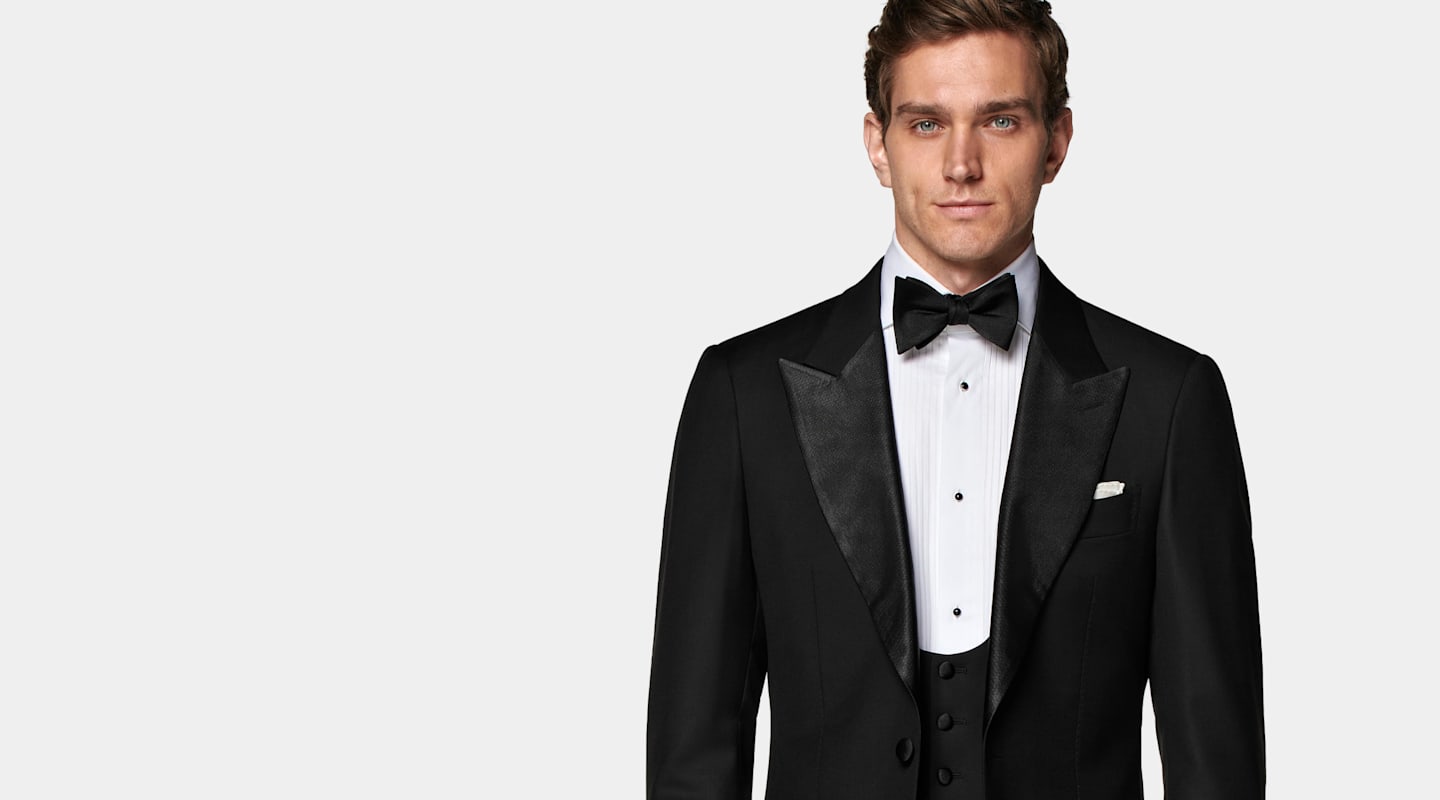
Simply put, the black-tie dress code encompasses a variation on the tuxedo. As one of the most longstanding of formal dress codes, black-tie attire can be expressed in one of three main ways: full tuxedo, creative black-tie, or black-tie optional.
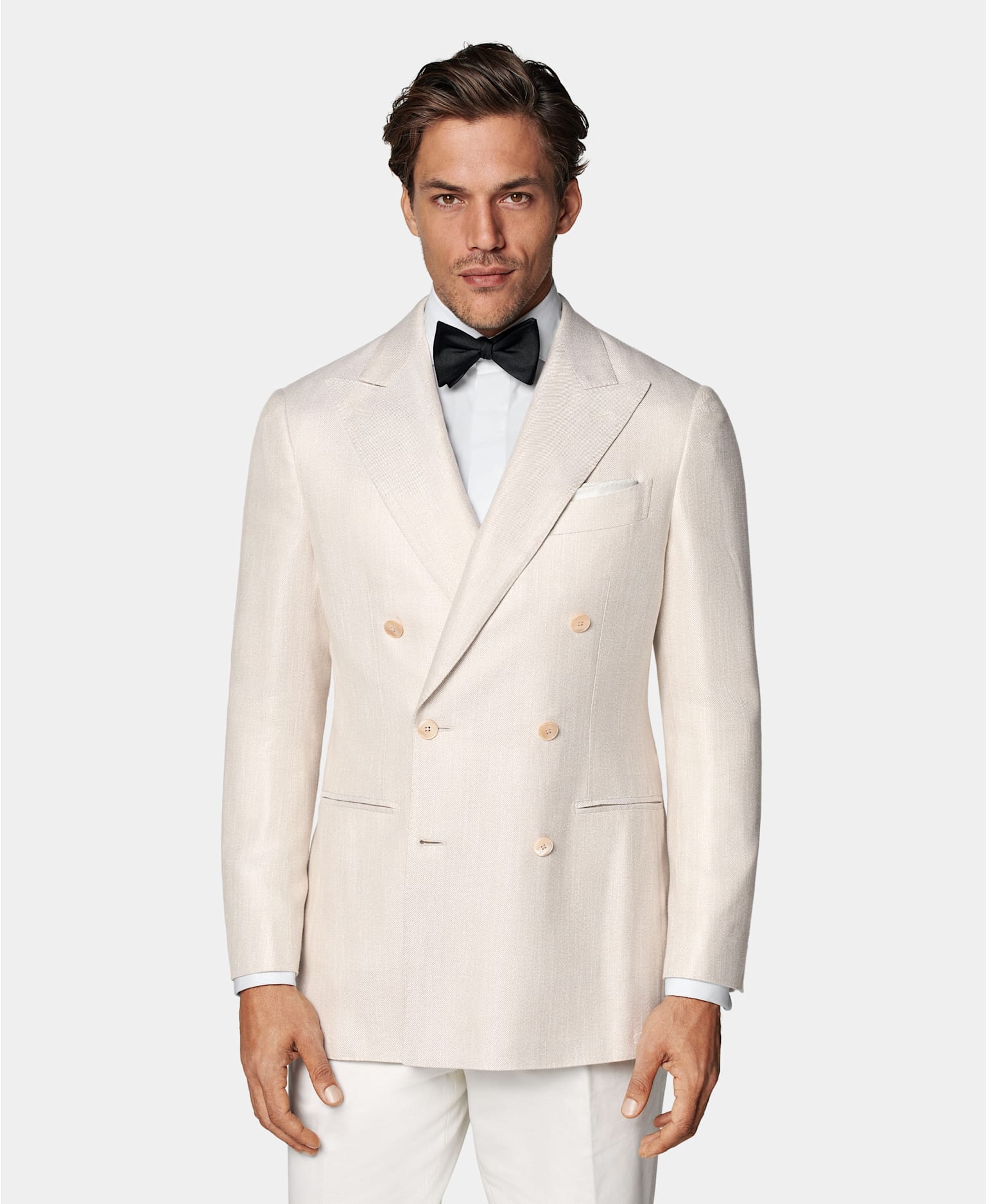
The Full Tuxedo
At a Glance: Tuxedo, shirt, lace-up shoes, & bow tie.
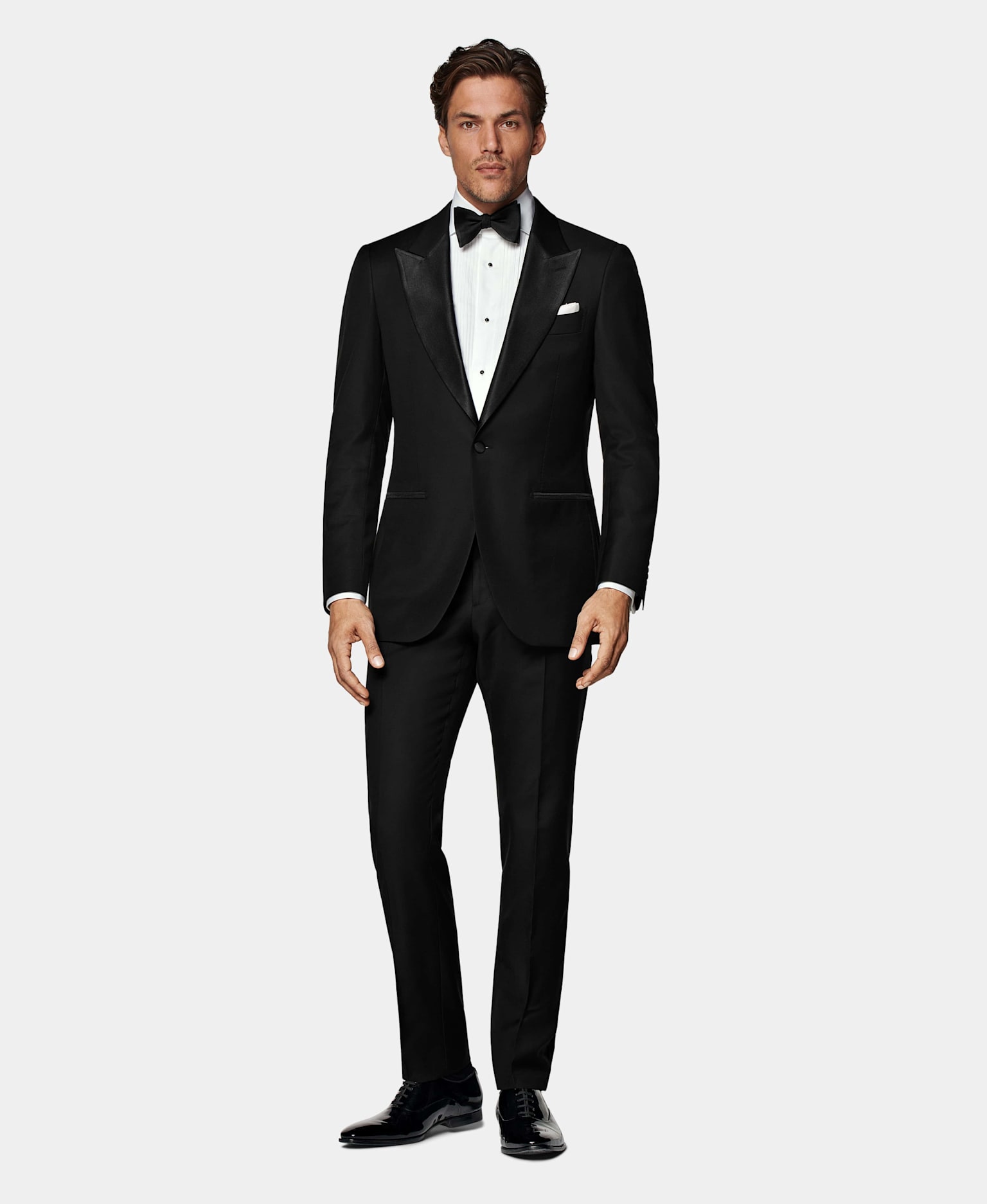
An enduring classic that takes the guesswork out of putting together an outfit for a black-tie event, the full black tuxedo comes with over a century of established guidelines that arguably make it the most refined of all dress codes.


What Kind of Suit You Need
Typically crafted from pure or blended wool, tuxedo jackets will come in your choice of a peak or shawl lapel, and feature refined details like silk-trimmed pockets and a silk-lined lapels. Tuxedo trousers will never carry belt loops, opting instead for interior suspender buttons and side adjusters for fastening, and a silk-lined out seam for added detail.
The Shirt
A full tuxedo should always be completed with a white shirt, which can be found in a variety of tuxedo-friendly styles, like plain, textured or pleated bib-fronts, or hidden plackets, and typically with French cuffs. Don’t forget to add a black silk bow tie!
The Shoes
To finish the look, add some black socks and step into a pair of polished, Oxford-style patent leather lace-up shoes, or lose the socks and opt for velvet loafers.
The Accessories
The full tuxedo can be touched up with a white pocket square and a pair of cufflinks, which are a great way to infuse a subtle touch of personality.
Creative Black-Tie
At a Glance: Off-white jacket & trouser pairing, dress shirt, lace-ups or slippers.
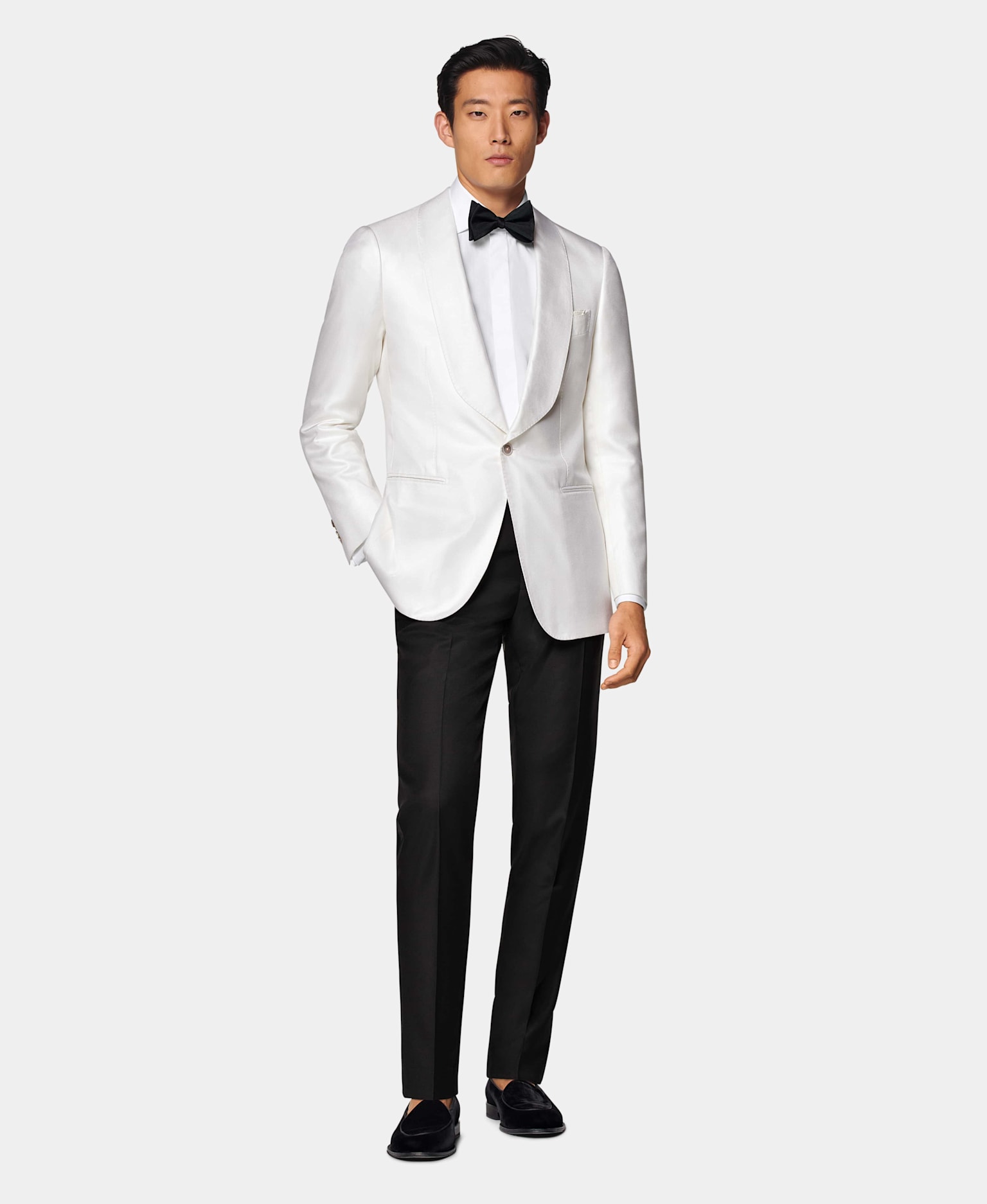
With weddings becoming less formal, “creative black-tie” gives guests more freedom to infuse some personality—most often by forgoing the tuxedo & suit altogether and opting for a relatively casual dinner jacket pairing instead.
What is a Dinner Jacket?
A dinner jacket—which is simply the term for a jacket that's specifically designed for use in a formal outfit—invites you to add hints of your own personal style through different fabric and accessories to create a unique (yet still elegant) look. Colors should not be overly flamboyant, but you can certainly step outside the boundaries of the traditional black-tie code.
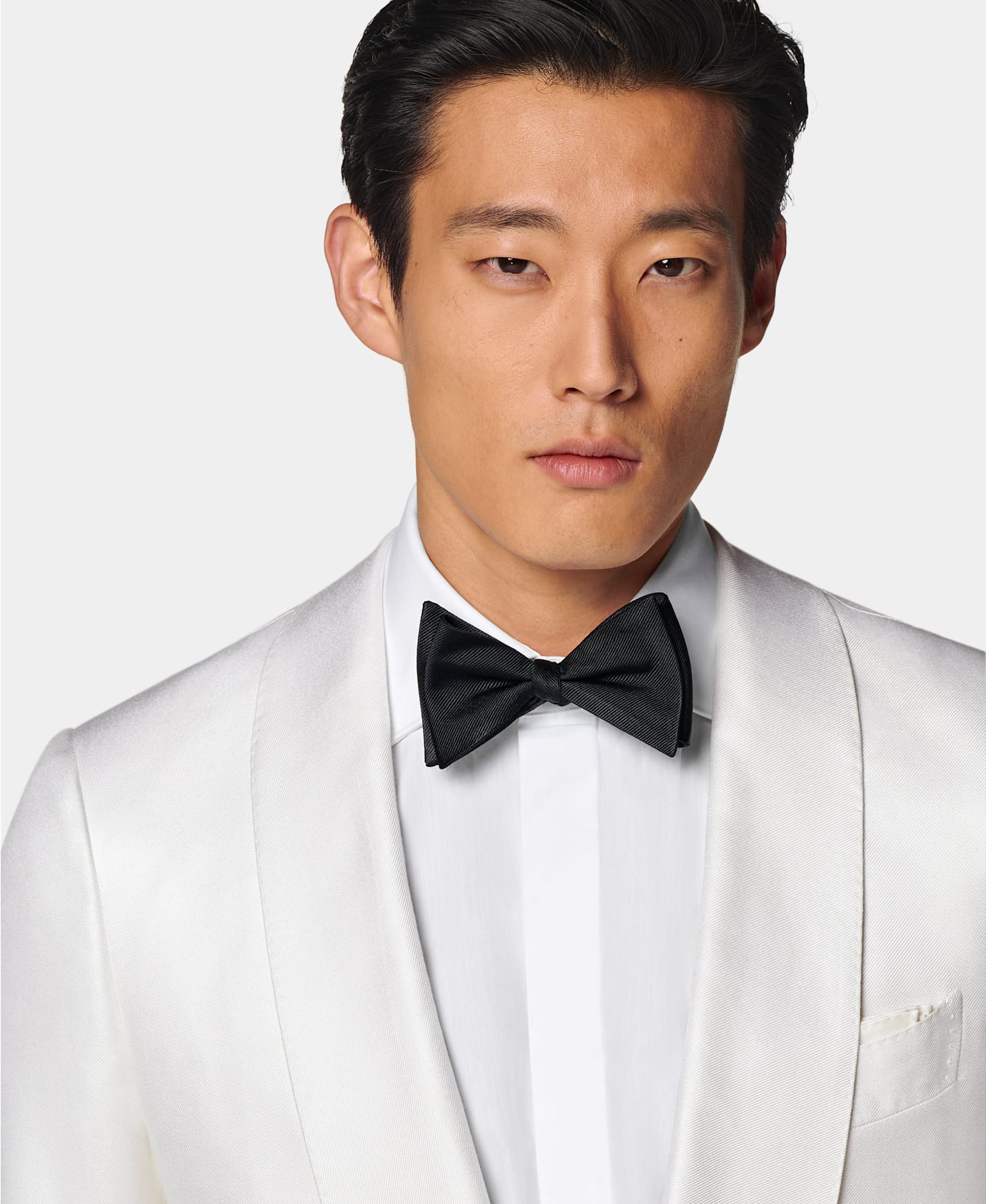
What Kind of Suit You Need
Wool, cotton, or velvet dinner jackets in a rich shade like burgundy, deep blue, should be paired with black tux trousers, while bright off-whites can be paired with black or matching shades.
The Shirt & Shoes
While a white shirt & bow tie is certainly acceptable, a dinner jacket ensemble opens the door to more updated pairings, like a black button-up, or black pure wool or silk blend turtleneck instead of shirt—and when it comes to shoes, subbing velvet slippers for lace-up makes a memorable sartorial accent.
The Accessories
When putting on the finishing touches, a pair of dark socks remain a classic staple, while the right pair of cufflinks, shirt studs, or pocket squares can easily infuse a bit of personality. For those who want a more individualist spin on a classic, a dinner jacket pairing is the go-to choice in black-tie.
Black-Tie Optional
At a Glance: Formal suit, dress shirt, leather shoes, & tie.
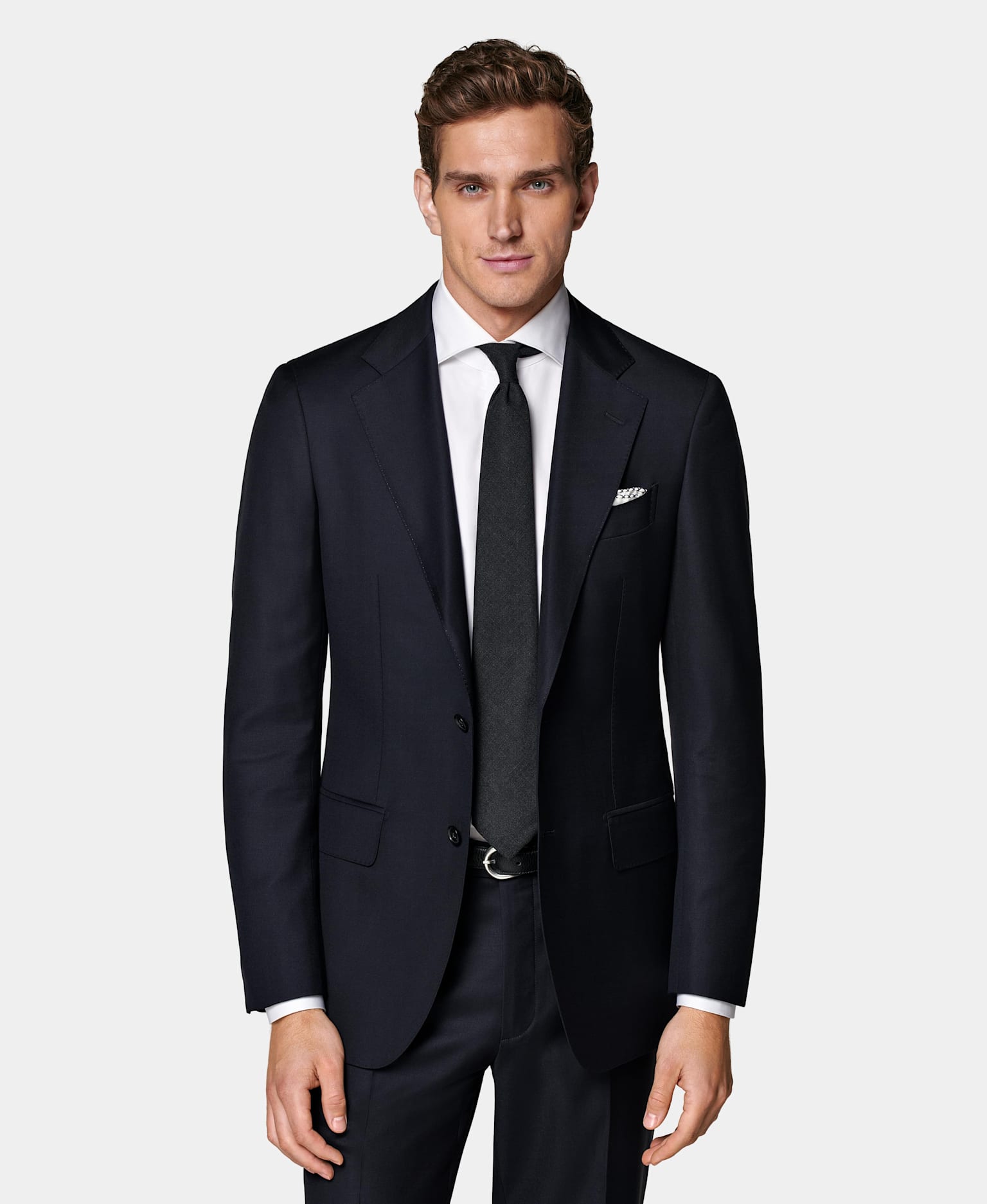
As the name suggests, a “black-tie optional” event is one in which guests have some flexibility in their attire while still maintaining a strict level of formality. If you decide to skip the tux, keep it elevated with these formal suiting option.

What Kind of Suit You Need
Start with a single-breasted, double-breasted, or 3-piece suit. You’ll want to stick to classic colors like black, charcoal, and dark grey; midnight blue or navy are also excellent choices. While solid colors are preferable, discreet patterns like a thin windowpane or a micro houndstooth check are certainly acceptable.
The Shirt
A white shirt is a must, as colored shirts—even a very pale pastel blue, for example—will be much too informal. Avoid patterns in your shirt, and, when possible, opt for a French cuff (though a barrel cuff is still ok in a pinch).
The Shoes & Accessories
Bring it all together with a pair of leather Oxfords, loafers, or Derbies and a classic silk or knitted tie. Be sure to avoid wearing an actual bow tie with this ensemble, as it may give the impression that you can’t distinguish between a tuxedo and a formal suit.









